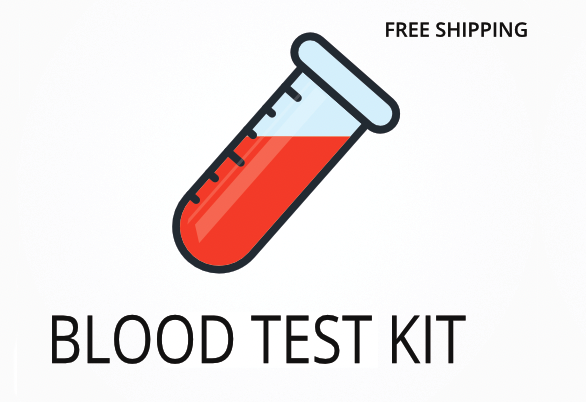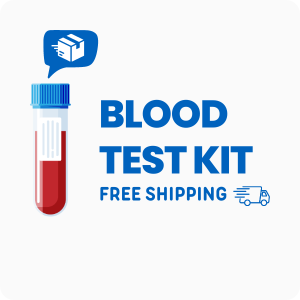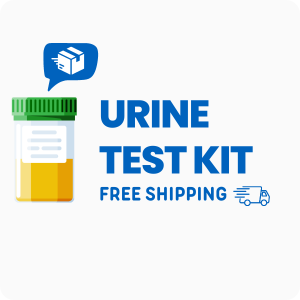Ordering the IgE Inhalants | New York
Ordering the IgE Inhalants | New York test helps identify specific triggers for symptoms like sneezing, itchy eyes, nasal congestion, and skin rashes. This test measures immunoglobulin E (IgE) antibodies in your blood that react to common airborne allergens such as pollen, pet dander, dust mites, and mold. Interestingly, some people with eczema or chronic sinus issues may have elevated IgE levels even if they do not have classic allergy symptoms.
When ordering this test, you can expect these specific benefits:
- Pinpoints which environmental allergens are causing your symptoms.
- Helps guide targeted changes to your home or work environment.
- Supports your doctor in choosing the right allergy treatments.
- Reduces unnecessary avoidance of non-triggering substances.
- Provides a clear baseline for tracking changes over time.
Who Should Consider Allergy and Environmental Sensitivity Testing
People who experience frequent sneezing, runny nose, or itchy skin during certain seasons or after exposure to pets may benefit from this test. For example, someone who notices their symptoms worsen every spring or after visiting a friend with a cat may want to know exactly which allergens are responsible.
Ordering this test may also be helpful in these situations:
- Persistent coughing or wheezing that does not improve with standard treatments.
- Recurring sinus infections that seem to follow changes in weather or location.
- Unexplained skin rashes or hives that appear after being outdoors.
- Children with ongoing nasal congestion or eczema that disrupts sleep.
- People who notice headaches or fatigue after cleaning or spending time in older buildings, as hidden mold can trigger IgE responses.
Testing for inhalant allergies can help you and your doctor make informed decisions about symptom management, targeted avoidance, and treatment options. Delaying this test may result in ongoing symptoms and missed opportunities to address triggers early.
How to Prepare for Allergy Blood Testing
Fasting is not required for this test, so you can eat and drink as usual before your blood draw. Make sure to follow any specific instructions your doctor or healthcare provider gives you, as these may help ensure the best results for your situation.
Labs Included When Ordering Your IgE Inhalants | New York
| Test Name | Reference Range | Significance | Low and High Levels of IgE Inhalants | New York |
|---|---|---|---|
| Tree Pollens | |||
| Alder Tree – IgE | <0.35 | Measures IgE antibodies to alder tree pollen, a common spring allergen. High levels suggest sensitivity to alder pollen, which can cause seasonal symptoms. |
High levels mean you may react to alder pollen in the air.
Low levels mean you are unlikely to be sensitive to alder pollen. |
| Australian Pine Tree – IgE | <0.35 | Detects IgE response to Australian pine pollen, which can trigger allergies in some regions. Useful for identifying less common tree pollen sensitivities. |
High levels mean you may have symptoms when exposed to Australian pine pollen.
Low levels mean this tree is not likely a trigger for you. |
| Birch Tree – IgE | <0.35 | Assesses IgE antibodies to birch pollen, a major cause of springtime allergies. High results often link to sneezing, itchy eyes, and congestion. |
High levels mean birch pollen may be causing your allergy symptoms.
Low levels mean birch pollen is not a likely allergen for you. |
| Cottonwood Tree – IgE | <0.35 | Measures IgE to cottonwood pollen, which can cause spring and early summer allergy symptoms in some people. |
High levels mean cottonwood pollen may be a trigger.
Low levels mean cottonwood pollen is not likely to cause symptoms. |
| Elm Tree – IgE | <0.35 | Detects IgE antibodies to elm pollen, which can cause respiratory symptoms during its pollination season. |
High levels mean elm pollen may be causing your symptoms.
Low levels mean elm pollen is not a likely allergen for you. |
| Maple Tree – IgE | <0.35 | Assesses IgE response to maple pollen, which can be a source of spring allergies in some regions. |
High levels mean maple pollen may be a trigger.
Low levels mean maple pollen is not likely to cause symptoms. |
| Mesquite Tree – IgE | <0.35 | Measures IgE to mesquite pollen, which can cause allergy symptoms in certain geographic areas. |
High levels mean mesquite pollen may be a trigger.
Low levels mean mesquite pollen is not likely to cause symptoms. |
| Mountain Cedar Tree – IgE | <0.35 | Detects IgE antibodies to mountain cedar pollen, a common winter allergen in some regions. |
High levels mean mountain cedar pollen may be a trigger.
Low levels mean mountain cedar pollen is not likely to cause symptoms. |
| Oak Tree – IgE | <0.35 | Assesses IgE response to oak pollen, a widespread spring allergen that can cause sneezing and congestion. |
High levels mean oak pollen may be a trigger.
Low levels mean oak pollen is not likely to cause symptoms. |
| Olive Tree – IgE | <0.35 | Measures IgE to olive pollen, which can cause allergy symptoms in certain climates. |
High levels mean olive pollen may be a trigger.
Low levels mean olive pollen is not likely to cause symptoms. |
| Pecan Tree – IgE | <0.35 | Detects IgE antibodies to pecan pollen, which can cause allergy symptoms in some areas. |
High levels mean pecan pollen may be a trigger.
Low levels mean pecan pollen is not likely to cause symptoms. |
| Walnut Tree – IgE | <0.35 | Assesses IgE response to walnut pollen, which can cause allergy symptoms in some people. |
High levels mean walnut pollen may be a trigger.
Low levels mean walnut pollen is not likely to cause symptoms. |
| White Mulberry Tree – IgE | <0.35 | Measures IgE to white mulberry pollen, which can cause allergy symptoms in some regions. |
High levels mean white mulberry pollen may be a trigger.
Low levels mean white mulberry pollen is not likely to cause symptoms. |
| Grasses | |||
| Bahia Grass – IgE | <0.35 | Detects IgE antibodies to bahia grass pollen, a common cause of summer allergies in some areas. |
High levels mean bahia grass pollen may be a trigger.
Low levels mean bahia grass pollen is not likely to cause symptoms. |
| Bermuda Grass – IgE | <0.35 | Measures IgE to bermuda grass pollen, which can cause allergy symptoms in warm climates. |
High levels mean bermuda grass pollen may be a trigger.
Low levels mean bermuda grass pollen is not likely to cause symptoms. |
| Brome Grass – IgE | <0.35 | Assesses IgE response to brome grass pollen, a source of allergy symptoms in late spring and summer. |
High levels mean brome grass pollen may be a trigger.
Low levels mean brome grass pollen is not likely to cause symptoms. |
| Canary Grass – IgE | <0.35 | Detects IgE antibodies to canary grass pollen, which can cause allergy symptoms in some people. |
High levels mean canary grass pollen may be a trigger.
Low levels mean canary grass pollen is not likely to cause symptoms. |
| Cultivated Oat Grass – IgE | <0.35 | Measures IgE to oat grass pollen, which can cause allergy symptoms in some regions. |
High levels mean oat grass pollen may be a trigger.
Low levels mean oat grass pollen is not likely to cause symptoms. |
| Johnson Grass – IgE | <0.35 | Assesses IgE response to johnson grass pollen, a common allergen in some areas. |
High levels mean johnson grass pollen may be a trigger.
Low levels mean johnson grass pollen is not likely to cause symptoms. |
| June Grass (Kentucky Blue) – IgE | <0.35 | Detects IgE antibodies to june grass pollen, a common cause of spring and summer allergies. |
High levels mean june grass pollen may be a trigger.
Low levels mean june grass pollen is not likely to cause symptoms. |
| Orchard Grass – IgE | <0.35 | Measures IgE to orchard grass pollen, which can cause allergy symptoms in late spring and summer. |
High levels mean orchard grass pollen may be a trigger.
Low levels mean orchard grass pollen is not likely to cause symptoms. |
| Perennial Rye Grass – IgE | <0.35 | Assesses IgE response to perennial rye grass pollen, a common allergen in many regions. |
High levels mean perennial rye grass pollen may be a trigger.
Low levels mean perennial rye grass pollen is not likely to cause symptoms. |
| Red Top – IgE | <0.35 | Detects IgE antibodies to red top grass pollen, which can cause allergy symptoms in some people. |
High levels mean red top grass pollen may be a trigger.
Low levels mean red top grass pollen is not likely to cause symptoms. |
| Sweet Vernal Grass – IgE | <0.35 | Measures IgE to sweet vernal grass pollen, which can cause allergy symptoms in spring and early summer. |
High levels mean sweet vernal grass pollen may be a trigger.
Low levels mean sweet vernal grass pollen is not likely to cause symptoms. |
| Timothy Grass – IgE | <0.35 | Assesses IgE response to timothy grass pollen, a major cause of hay fever in many regions. |
High levels mean timothy grass pollen may be a trigger.
Low levels mean timothy grass pollen is not likely to cause symptoms. |
| Weeds and Other Pollens | |||
| Cocklebur – IgE | <0.35 | Detects IgE antibodies to cocklebur pollen, a common weed allergen in late summer and fall. |
High levels mean cocklebur pollen may be a trigger.
Low levels mean cocklebur pollen is not likely to cause symptoms. |
| Common Ragweed – IgE | <0.35 | Measures IgE to common ragweed pollen, a leading cause of fall allergies. |
High levels mean common ragweed pollen may be a trigger.
Low levels mean common ragweed pollen is not likely to cause symptoms. |
| Dandelion – IgE | <0.35 | Assesses IgE response to dandelion pollen, which can cause allergy symptoms in some people. |
High levels mean dandelion pollen may be a trigger.
Low levels mean dandelion pollen is not likely to cause symptoms. |
| English Plantain – IgE | <0.35 | Detects IgE antibodies to English plantain pollen, a common allergen in spring and summer. |
High levels mean English plantain pollen may be a trigger.
Low levels mean English plantain pollen is not likely to cause symptoms. |
| Giant Ragweed – IgE | <0.35 | Measures IgE to giant ragweed pollen, a major cause of fall allergy symptoms. |
High levels mean giant ragweed pollen may be a trigger.
Low levels mean giant ragweed pollen is not likely to cause symptoms. |
| Lamb’s Quarters – IgE | <0.35 | Assesses IgE response to lamb’s quarters pollen, a weed allergen that can cause symptoms in late summer. |
High levels mean lamb’s quarters pollen may be a trigger.
Low levels mean lamb’s quarters pollen is not likely to cause symptoms. |
| Nettle – IgE | <0.35 | Detects IgE antibodies to nettle pollen, which can cause allergy symptoms in some people. |
High levels mean nettle pollen may be a trigger.
Low levels mean nettle pollen is not likely to cause symptoms. |
| Rough Marsh Elder – IgE | <0.35 | Measures IgE to rough marsh elder pollen, a weed allergen that can cause symptoms in late summer and fall. |
High levels mean rough marsh elder pollen may be a trigger.
Low levels mean rough marsh elder pollen is not likely to cause symptoms. |
| Rough Pigweed – IgE | <0.35 | Assesses IgE response to rough pigweed pollen, a weed allergen that can cause symptoms in late summer. |
High levels mean rough pigweed pollen may be a trigger.
Low levels mean rough pigweed pollen is not likely to cause symptoms. |
| Russian Thistle – IgE | <0.35 | Detects IgE antibodies to Russian thistle pollen, a weed allergen that can cause symptoms in late summer and fall. |
High levels mean Russian thistle pollen may be a trigger.
Low levels mean Russian thistle pollen is not likely to cause symptoms. |
| Western Ragweed – IgE | <0.35 | Measures IgE to western ragweed pollen, a major cause of fall allergy symptoms in some regions. |
High levels mean western ragweed pollen may be a trigger.
Low levels mean western ragweed pollen is not likely to cause symptoms. |
| Other Environmental Allergens | |||
| Cat Dander – IgE | <0.35 | Detects IgE antibodies to proteins found in cat skin and saliva, which can cause year-round allergy symptoms. |
High levels mean cat dander may be a trigger.
Low levels mean cat dander is not likely to cause symptoms. |
| Dog Dander – IgE | <0.35 | Measures IgE to proteins in dog skin and saliva, which can cause allergy symptoms throughout the year. |
High levels mean dog dander may be a trigger.
Low levels mean dog dander is not likely to cause symptoms. |
| Cockroach – IgE | <0.35 | Detects IgE antibodies to proteins in cockroach droppings and body parts, which can cause year-round allergy symptoms, especially in urban areas. |
High levels mean cockroach allergens may be a trigger.
Low levels mean cockroach allergens are not likely to cause symptoms. |
| Mite Generic – IgE | <0.35 | Measures IgE to dust mite proteins, a common cause of year-round nasal and respiratory symptoms. |
High levels mean dust mites may be a trigger.
Low levels mean dust mites are not likely to cause symptoms. |
| Mold Generic – IgE | <0.35 | Detects IgE antibodies to common mold spores, which can cause symptoms indoors and outdoors, especially in damp environments. |
High levels mean mold may be a trigger.
Low levels mean mold is not likely to cause symptoms. |
| Scale – IgE | <0.35 | Measures IgE to scale, which can refer to skin flakes from animals or environmental sources that may trigger allergies. |
High levels mean scale allergens may be a trigger.
Low levels mean scale allergens are not likely to cause symptoms. |
| Total IgE | 0-100 | Total IgE measures the overall amount of IgE antibodies in your blood. High levels can indicate allergic sensitization or other immune responses. |
High levels mean you may have allergies or other immune conditions.
Low levels mean allergies are less likely, but not ruled out. |
Reference ranges may change slightly as labs update their methods and guidelines. Always review your results with your healthcare provider for the most current interpretation.
IgE Inhalants | New York FAQ
Is there IgE Inhalants | New York testing near me?
This is a test kit that can be collected at a local draw site, which you can find using the draw location link at the top of the page. For people with ongoing allergy symptoms, having a nearby collection site makes it easier to get tested quickly and start finding answers.
How do I interpret the test results?
While your treating physician should review your results, we also offer a one-on-one test results review with our clinical team to help you understand your results and what they mean for your symptoms.
What is the cost of the test?
The price listed for this test includes standard shipping to you and return shipping to the lab, but local draw fees may apply. Ordering this test can help you identify specific triggers, which may help you manage symptoms like sneezing and congestion more effectively.
How often should I retest?
Retesting is usually recommended every 1-2 years, or sooner if your symptoms change or new exposures occur. Repeating the test helps track changes in your sensitivities and supports adjustments to your allergy management plan.
How accurate is the test?
This test uses immunoassay technology to measure IgE antibodies, with a specificity of 98% and sensitivity of 96%. TrueHealthLabs.com partners with CLIA-certified and CAP-certified laboratories to uphold rigorous testing standards for dependable results.
Important Notes
None.
Medical Review Board
Reviewed by Jeff Donohue M.D. from Body Logic and Brady Hurst DC, CCCN. Written by True Health Lab’s team of editorial health contributors.
Disclaimer: This information is for educational purposes only and not intended as medical advice. Consult your healthcare provider for personalized guidance.
Why Customers Trust True Health Labs - What People are saying
Also rated 4.6 out of 5 based on 3452 ShopperApproved reviews- See all TrueHealthLabs.com reviews.









